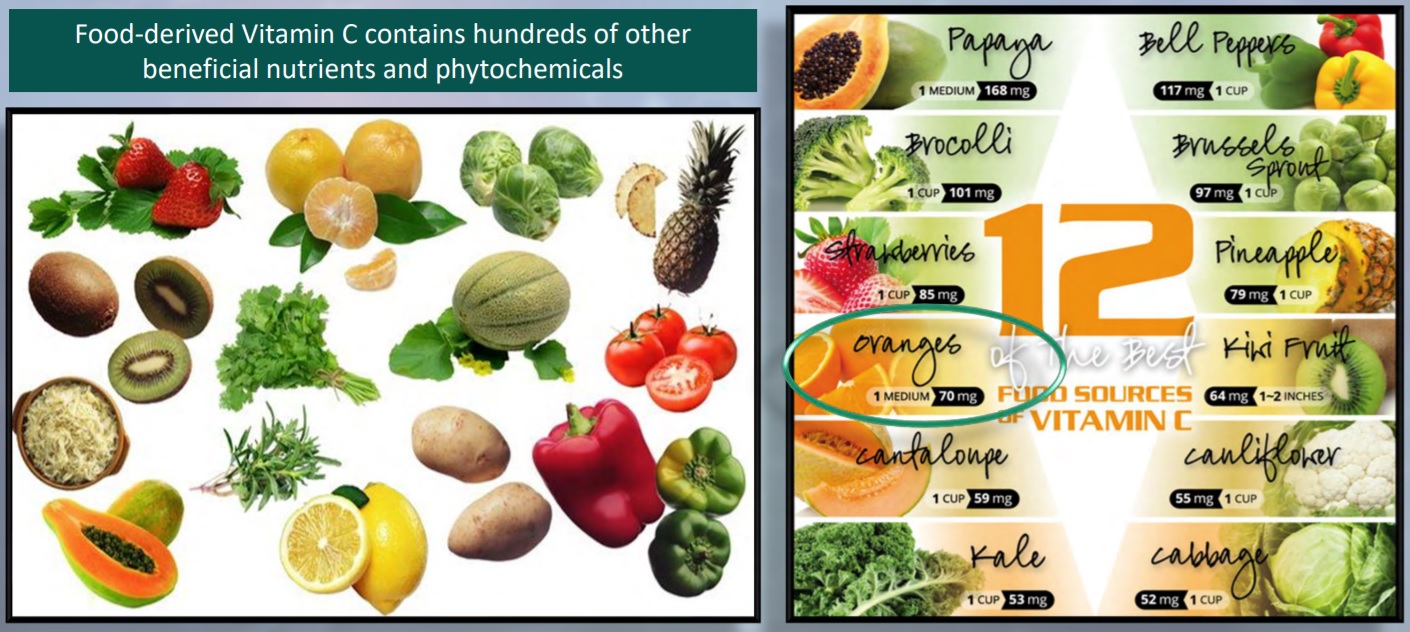Vitamin C has become a household regular in the supplements cabinet. When it comes to viral infections, many people reach for Vitamin C in the hope of preventing or reducing severity/duration of infections.
So, how much Vitamin C does a person need? That depends on if you want to prevent deficiency, increase insufficient levels, help support the body’s many needs for this vitamin or address major inflammation.
Another consideration is that ‘Ascorbic Acid’ is NOT Vitamin C. The vitamin consists of many components – as they are provided by nature in fresh fruits and vegetables – including ascorbates and bioflavinoids. Food sources are always superior as they also provide a myriad of other beneficial nutrients.

But, it doesn’t stop there: taken orally, most bodies will only absorb around 300mg – so if you are taking a mega-dose tablet of 1000mg “Vitamin C”, don’t bother. Taking smaller or lower doses more frequently during times of increased need is far more effective (powders are great for dosing). Intravenous use of vitamins has a very different outcome in the body as it floods the cells quenching inflammation.
High doses of Vitamin C can actually damage cells – so please never self prescribe!
So, as with everything, it depends on:
- your individual needs (which change)
- what type of product you are taking
- the dose you are taking
- the frequency of the dose
- how it is administered (orally or IV)
With all your nutritional and supplemental needs, please always consult a qualified Naturopath.
Vitamin C
A landmark study done in 1944 set the recommended dietary intake for vitamin C to prevent scurvy. Participants were put on a vitamin C deplete diet, then supplemented with 0, 10 or 70mg and their skin was cut to see how quickly their wound healed. This study is quite controversial by today’s standards. It put them in a very dangerous situation as deficiency can lead to internal bleeding and death.
The study concluded that 10mg was the minimum required to prevent deficiency and treat impaired wound healing, and by inference, other collagen-related diseases such as heart disease or stroke. The WHO relies on this narrative to set the recommended nutrient intake for vitamin C at 45mg.
Now, let’s look at this new study that reviewed the original data. They found a 10mg dosage was suboptimal; associated with a 42% weakened scar strength when compared with 80mg. The researchers determined an average daily vitamin C intake of 95mg is required to prevent weak scar strength for 97.5% of the population, which is more than double the daily 45mg vitamin C intake recommended by the WHO. I think this is a very important example of how we need to understand the differences outlined in the guidelines, particularly the minimum requirements to prevent deficiency versus optimal amounts.
Source: Dr Michael Osiecki, PhD, BE, BBiotech (hons)

